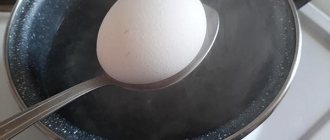Take more table salt, roll the carcass in it, and then rinse thoroughly under running water (the procedure can be repeated several times). Next, you can proceed to cutting the carcass:
- carefully rip open the belly, first making a small incision under the head;
- we take out the insides so that, God forbid, we do not damage the gallbladder (the leaked bile will give the meat bitterness);
- remove the inner film,
- remove the gills;
- wash the carcass again,
- dry with a paper towel.
Next, you can proceed to dividing the carcass into portions and filleting (if this is provided for in the recipe). When working with fish, it is recommended to always keep salt on hand, as this product is an excellent cleanser and also acts as an absorbent (eliminates unpleasant odors).
Everyone knows that after working with fish, a characteristic smell remains that permeates the cutting board and our hands. A few drops of lemon juice and some salt will help solve this problem.
Outlandish fish - catfish
Catfish live in almost all major rivers of Russia. They are nocturnal. During the day, catfish lie in deep pools on the muddy bottom of reservoirs, buried in the mud. This is a truly huge fish that can reach 5 meters in length and weigh up to 3 quintals. But such giants are rare, and getting such a trophy out of the water is very problematic. For cooking, much smaller specimens are used - up to 20 kg. Properly cooked young catfish meat is very tasty.
In addition, this fish has absolutely no scales, which means that the kitchen will remain clean during its processing. Another significant advantage of catfish is that catfish do not have small bones in the muscles and tail - only spinal bones and ribs.
What to do with excess caviar?
You ate a lot of caviar, what to do with the excess? Add salt.
The salting method depends on the expected duration of storage.
1. Preservation for several days can be ensured by simply salting the caviar. First they pierce it, removing all the films. Then salt is added to the mass, as in any ordinary dish. You can pepper it a little. The next day it is served. If you can’t wait to try it, take a sample after three hours.
2. Salting for longer storage:
- 1.5 kg of caviar,
- 5-6 liters of water,
- 7-8 tbsp. l. salt.
The caviar is poured into a boiling solution, stirred, and the curdled film is removed. Rinse with cold water several times until the water remains clean and clear when drained. At the same time, remove all small film residues.
Prepare a new portion of brine from water and salt, bring to a boil, and cool. The washed caviar is placed in a bag and placed in brine for 15 minutes. The caviar is washed and placed in jars. Pour a spoonful of vegetable oil on top. Store for no more than two months.
Note:
If the caviar is well steamed, it looks beautiful: it has a bright orange color. If the shade is dirty yellow, you need to fill it with boiling water (boiling brine) again. And rinse again.
ribalka-vsem.ru
How to clean catfish before cooking
There are no scales on the skin of catfish, but it is abundantly covered with mucus, which has an unpleasant smell of mud. If you don’t get rid of it, you can seriously spoil the prepared dish. But in general, cleaning catfish is not difficult.
- First, the fish should be sprinkled with coarse salt (or rolled in it).
- Rub with an old sponge or napkin (you can just use a gloved hand).
- Using the blunt side of a knife, carefully scrape off the salt and mucus from the skin. We must try to make the skin a light shade.
- Rinse the fish well.
- If the mucus is not completely cleared, you need to repeat all the steps again.
- How to clean fish in “camping” conditions: use wood ash instead of salt.
The skin of this fish is strong, so you can safely clean it without fear of damaging it.
Catfish do not have sharp spines on the dorsal and pelvic fins, like perch or pike perch, but there are sharp spines on the front fins (near the gills) that can cause injury. Such punctures are very painful. Therefore, you should be careful while working, or, first of all, remove the fins by cutting them off with kitchen scissors or a knife.
Cleaning process before cooking
There are no scales on the body of a representative of this species, but there is mucus with an unpleasant smell of mud. In order not to spoil the dish during the cooking process, you must carefully remove it. Fish can be eaten with the skin if the carcass is properly cleaned and the smell is removed. Beginners who do not know how to clean catfish at home should first familiarize themselves with the sequence of actions:
If mucus is not completely discharged, all steps should be repeated until complete cleansing. When cutting up a carcass outdoors, you should use wood ash instead of salt. You can clean the skin without any worries; it is quite durable and rarely damaged.
A step-by-step description allows you to understand how to remove mucus from catfish correctly . When cutting, you need to be careful:
The fish has sharp spines on its front fins and you can get hurt by them. To do this, first of all, remove them using food scissors or a knife.
Gutting
After you have finished cleaning the catfish, you can begin gutting. For this:
- Place the fish on its back and make a shallow puncture near the head so as not to damage the insides. Insert the tip of the knife into the hole with the blade up and, slightly pulling the peritoneum with it, cut the belly from the head to the anus.
- Open the incision and carefully remove the entrails without tearing them away from the head, being careful not to crush the gall bladder - bile that gets on the meat will make it bitter.
- Trim the gills and pull them out along with the entrails.
- The inner walls of the belly must be thoroughly cleaned of films.
- Make cuts on both sides along the fins, then pull them out by hand or with pliers, starting from the tail to the head.
- If caviar is found during gutting, it must be carefully removed and then cleaned of the film. This is easy to do with a regular fork. Salted or fried catfish caviar is a real delicacy.
We recommend: Service life of water meters in an apartment: when to change, and when to call a specialist for verification?
If bile gets on the meat, most often the pieces are cut out and thrown away. Should not be doing that. The bile should be washed off or wiped with a napkin, and the place where it got in should be rubbed with salt. After a couple of minutes, wash off the salt and you can safely send these pieces to cooking.
Preparation
When starting to work with catfish, it is important to take into account that the circumbranch fins have sharp spines that can seriously injure. Therefore, they should first be cut off with a knife or scissors.
Before you start cleaning the fish from its internal organs, you need to prepare it. First of all, professionals advise making sure that the individual is dead, otherwise it may injure the cook. Catfish is a very strong fish. To do this, you need to chop off the tail, which will not be useful in the future anyway.
After this, you should clean the skin of mucus and partially get rid of the unpleasant odor. To do this, roll the catfish in coarse salt and leave for 5 minutes. Then you need to rinse the carcass by scraping off the mucus from it; for this you can use a hard sponge, or scrape off the mucus with the blunt side of a knife blade. There is no need to be afraid of damaging the skin of catfish; it is very thick and difficult to damage, so you can clean it actively.
You should brush until the leather turns a light shade. If this was not achieved the first time, you can repeat the procedure. Catfish is often cooked while fishing, immediately after the catch; under these conditions, the mucus can be removed with ash; it is important to thoroughly rinse the carcass after this.
How to separate the pulp
If necessary, separate the fillet from the bones. To do this, you first need to cut off the head. Then the fish should be laid on its side. From the tail, along the back, make a shallow cut, placing the knife blade parallel to the tabletop, trying to make it go along the spinal bones. Then, pulling the edge of the pulp along the cut, use the tip of a knife to deepen the cut to the rib bones.
Turning the blade along the ribs, carefully remove the flesh from the front of the carcass, without cutting off from the tail. Lifting the cut part of the fillet, position the knife parallel to the spinal bones and, moving along the spine, cut the fillet from the tail. Turn the carcass over and remove the fillet from the other side.
There is no need to throw away the head and bones; they can be used to prepare broth or for boiling when preparing double fish soup.
Filleting
To obtain fillet from catfish, it should be cut in a certain sequence. The whole process is to separate the meat from the bones. At the beginning of this procedure, it is necessary to cut off the head and place the carcass on its side. Starting from the tail and moving towards the head, a deep incision is made. The knife is placed parallel to the table and they try to guide it along the spinal bones.
After this, the incision is carefully pulled back and deepened with a knife to the rib bones. By turning the blade along the ribs, carefully remove the flesh from the front of the body, without cutting it off from the tail. The carcass is turned over and the second sirloin is removed in a similar way. The bones and head are left to prepare the broth.
Removing the skin
To prepare minced meat or shish kebab, the skin is not needed, which means it can be removed. It is more convenient to do this from a whole catfish carcass, rather than from a removed fillet.
- The fish must first be washed, gutted and fins removed.
- After this, with a sharp knife you need to make a circular incision in the skin across the body behind the gills and another one in the middle of the back along the body.
- Grab the edge of the skin near the head with pliers and pull towards the tail, trimming with a knife if necessary.
- Having removed the skin from one side of the carcass, remove it from the other in the same way.
You can cut the carcass into portions or remove fillets.
It is the skin that has a strong smell of mud, so removing it from the carcass can almost completely get rid of this smell.
We recommend: On ice like clockwork: we’ll tell you how to perfectly sharpen your skates at home
It will be much easier to remove the skin from the fish if you hang it by the gills.
Security measures
To avoid trouble, you need to know some nuances.
- Before cleaning and dressing your catfish, remove the spines that are located on the fins behind the gills. In young fish they are much sharper than in old ones. They easily penetrate the skin and can even damage muscles. They are usually removed with kitchen scissors or a sharp knife.
- Some individuals have poison in their spine. Therefore, to avoid problems, you need to first find out which types are safe. The most dangerous are eel-tailed and spiny sea catfish.
- When you cut the carcass, point the knife away from you.
- Use pliers, tweezers or other tools to remove the fins.
- Channel catfish have toxic elements on their head and spine, so these parts are not recommended for making fish soup.
If you follow all these rules, you can easily cope with cleaning catfish and prepare delicious steaks, kebabs and many other dishes from it.
How to get rid of a specific odor
Catfish is not always cooked because of the specific smell of mud that its meat has. Moreover, the larger and older the fish, the more sensitive this smell is. You can significantly reduce the unpleasant aroma by removing the skin from the catfish. To get rid of it completely, before cooking, pour lemon juice or dry white wine over the meat, let sit for 15-20 minutes, then rinse.
You can soak the somyatina in milk for 2-3 hours. This will not only remove the smell, but also make the meat tastier. During cooking, it would be a good idea to generously season the catfish with spices, including allspice and black pepper.
This fish is very good when smoked, and it doesn’t matter whether it’s cold or hot smoked. It makes excellent barbecue steaks and even shish kebab.
From properly cleaned and processed catfish meat, you can prepare many different dishes that will not leave anyone indifferent.
We recommend reading the article on how to clean burbot - about cleaning fish, which many are afraid of, but there is nothing complicated about it!
Filleting and skinning
Information on how to properly clean catfish will be incomplete if you do not know how to skin the carcass and separate the fillets. After the fish has been cleaned, you can begin this stage.
It is better to skin the catfish when the fish is still whole, and not when the fillet has already been cut off. The most convenient way to remove skin from a carcass is to hang it by the gills. To do this, an incision is made near the head and along the back along the entire length of the fish. Then the skin is pulled down; to do this, it can be hooked with pliers. It is important to ensure that the meat does not come off; to do this, it needs to be trimmed in time. It is the skin that has an unpleasant odor, so removing it can get rid of it.
Advice! To completely remove the smell, you need to soak the meat in milk or white wine.
Once the skin is removed, you can separate the fillet from the spine. Catfish have no small bones, the only ones being the spine and ribs. Therefore, by separating them you can get the purest fillet. You need to cut it off carefully by making an incision along the vertebral bone, then deepen it until you reach the ribs, but without damaging them. Pass the knife along the ribs and remove the meat from them. Cut the fillet from the tail section. Do the same with the other half.
The ridge and head are perfect for broth or fish soup, so you shouldn’t throw them away. You can prepare many different dishes from meat. Catfish makes excellent kebabs or cutlets, because it has no bones at all. Knowing how to clean fish and get rid of unpleasant odors, you can regularly treat yourself to wonderful dinners made from tender meat.
This strange fish is a catfish. She has an intimidating look. A huge head with a mustache, body length up to 5 meters and weight up to 300 kg. However, such monsters have two drawbacks. Firstly, it is quite problematic to pull them ashore, and secondly, their meat tastes like mud. Therefore, young catfish, weighing up to 15-20 kg, are more consumed as food. They have very tasty meat and some unscrupulous sellers of catfish fillet may even pass it off as sturgeon.
The main advantage of this fish is that it has no scales and no bones between the muscles. Therefore, it is enough to just scrape it out lightly with a knife and does not need to be cleaned.
Catfish is cut as follows. First, the head is separated in the area where the pectoral fins are located. Then its belly is cut lengthwise to the anal fin. At the same time, you must not damage his gallbladder, otherwise the bile will spill out and the meat will become bitter. The entrails are removed from the belly and the inner walls are cleaned of films. To remove the pelvic and dorsal fins, you need to make cuts along each fin to the spine on both sides. The fin is then pulled out from the fish's body with your fingers. This is suitable for small-sized fish; if you are cooking larger-sized catfish, then it is better to gut it and then chop it with an ax into pieces that will be convenient for further cutting. The size of the pieces will depend on the catfish recipe you choose.
Often those parts of the fish that have received bile from the cut gallbladder are thrown away. But you don't need to do this. It is enough to rub these places with salt and then wash it off.
Often the meat of catfish, especially large ones, has the smell of mud. You can get rid of it by pouring lemon juice or dry white wine on the fish and then rinsing it after 15-20 minutes. You can soak the meat in milk for several hours. This will also remove all odors.
Catfish can be prepared in different ways: boiled, fried (including deep-fried), baked, made into kebabs, cutlets and goulash. Catfish baked in the oven is very tasty. That's why it's so difficult to choose the best catfish recipe.
Catfish cutlets with cheese and mushroom sauce.
You need 500-600 grams of catfish meat, two eggs, 150 grams of hard cheese, three tablespoons of semolina, breadcrumbs and dill. For the sauce you need 150 grams of champignons, one onion, two tablespoons of flour, sour cream and vegetable oil.
Grind the catfish fillet in a meat grinder. Add eggs, semolina, chopped dill, salt and pepper. Mix thoroughly and add finely grated cheese. Then put the minced meat in the refrigerator for half an hour. Prepare the sauce separately. Boil the mushrooms and add salt. Strain the broth and finely chop the mushrooms. Fry the onion in vegetable oil, add flour during the frying process. Then pour in one glass of mushroom broth and all the sour cream. Make cutlets from chilled minced meat, roll in breadcrumbs and fry in vegetable oil until golden brown. Then put them in the sauce and simmer for another five minutes.
Another recipe for making catfish is kebab.
You need to take two kg of catfish meat, one lemon, a tablespoon of mustard and mayonnaise, parsley, dill, sugar, ground salt and fish seasoning. First we prepare the marinade. To do this, squeeze the lemon and mix its juice with mustard and chopped herbs. Then add mayonnaise, sugar, fish seasoning, ground white pepper and salt. you need to cut into large cubes, put in the marinade and leave in the refrigerator for 30-60 minutes. Thread the marinated meat onto skewers and fry over coals. If it is not possible to light a fire, you can bake them by covering them with foil. It will also be very tasty.
Catfish is a fish that lives in freshwater bodies of water; it is distinguished by the fact that it prefers to live in deep holes filled with not very clean water, so its meat can taste like swamp mud. It is especially important to rid the fish of the mucus that covers the skin of the catfish instead of scales. It is this that can become the main source of an unpleasant odor that will spoil even the most exquisite dish. To clean a catfish, you first need to roll it in coarse salt and clean the carcass. These are the main rules - how to clean catfish
Then you can start ripping open the abdomen and cutting off the fins, tail and head. At the stage of removing the entrails, you can discover that there is caviar in the catfish. It can be prepared in different ways. But first you need to rid it of films by peeling it with a regular fork or passing it through a meat grinder. Salted caviar is successful when using a weak salt solution (a few hours of salting is enough). And the task of how to cook catfish caviar becomes an easy task.
Cutting catfish with mandatory treatment with coarse salt and washing the carcass with water is a preliminary step for preparing this fish. The most delicious are small catfish that have not grown over 40 centimeters. They can be baked in the oven in foil (so as not to dry out). It is worth putting vegetable filling and aromatic herbs into the fish, which will help overcome the smell of the “river” if it still remains. But if you have a question - how to cook catfish in the oven if it is too large, then the answer is simple - chop it into portions.
The larger the catfish, the more joy the fishermen have, the more difficulties they have in preparing its tougher and more “aromatic” meat. To cook fish deliciously, you need to carry out the entire preliminary set of cleaning measures and cut it into portions. Each piece is rubbed with spices and fried - catfish is served with lemon wedges. And if you still have questions about how to cook catfish deliciously, then the article below provides a recipe for frying it in a frying pan
For this recipe you need to use either fillet or pieces of catfish, as well as egg breading and a mixture of flour and corn in which you will need to dip the fish pieces. Double breading allows for better taste. The recipe assumes that the catfish will be deep-fried, that is, the pieces of fish should be completely covered with hot oil. After frying catfish using this recipe, it is recommended to place it on a napkin to allow excess oil to drain.
If it is not possible to clean the catfish using salt at home, then you can try the camping option, when the fish must first be smoked with apple smoke and then skinned with a “stocking” from head to tail. In addition, cleansing the skin of mucus can be done with the help of ash. Here you can choose the best option for cleaning catfish and preparing it.
A large number of different dishes can be prepared from catfish meat: cutlets, pies, pies, baked fish and even kebabs. But in order for them to be tasty and aromatic, you need to know how to clean catfish correctly.
Recipe No. 2
To salt caviar according to this recipe, we will need an enamel pan
. Pour water into it - the volume is approximately three times greater than the volume of existing caviar. Add salt to the water (as for boiling eggs) and bring the saline solution to a boil. Add various spices and herbs to boiling water to taste: bay leaf, ground black pepper, black peppercorns.
Then remove the water from the heat and pour the prepared caviar into it. Cover the pan tightly with a lid and leave to steep for 15 minutes, no more. Strain the caviar through cheesecloth, allowing the water to drain completely. After the caviar has cooled, it is ready to eat. Storage in the refrigerator at a temperature of 0 -5 C is possible for a month
.
Recipe No. 1
First we need to prepare the brine. Rapa is a special salt solution for washing fish eggs.
- The proportions of standard brine are 100 g of salt per 1 liter of water. Bring the solution to a boil and pour the caviar into it while hot.
- Stir the caviar with a fork for about 3 minutes so that the hot solution covers all the eggs. Then we drain the brine and prepare a new one to repeat the procedure.
- A total of 3 fills are required. The first two times the water turns out cloudy, but the third time it should be more transparent and clean.
Then you need to free the caviar from excess moisture. To do this, put it on a sieve and wait 10-15 minutes until all the water has drained.
If there is no sieve, the caviar can be spread on a flat surface in an even layer of 3-4 cm and placed for a while at a slight slope. This method will help the water drain no worse than through a sieve.
After this, take a glass jar with a volume of approximately 1 liter and pour 2 tablespoons of vegetable oil into its bottom. Pour caviar on top, but not to the top, but about 75% of the jar
.
Add a full teaspoon of salt and mix well with a fork. Then we fill the rest of the jar with caviar and pour sunflower oil on top - about a 5 mm layer
.
We close it all with a plastic lid and let it stand in the refrigerator for several hours, but it’s better to leave it overnight
.
In the morning you can already enjoy sandwiches with delicious crumbly caviar of light amber color. The appetizer tastes lightly salted and does not smell of fish at all.
Total cooking time is only about 30 minutes. If, when preparing caviar in this way, you sterilize all utensils (jars, sieve, lid, fork, spoon), then unopened caviar can be stored in the refrigerator for a very long time - more than 1 month.
Necessary equipment
To work you will need:
- A knife (or a special fish scaler - their choice is now quite wide);
- Cutting board;
- Pelvis;
- Plastic bag;
- Culinary scissors.
Do not miss
- Do not miss
3 most beneficial properties of fish (and a list of the best varieties)











